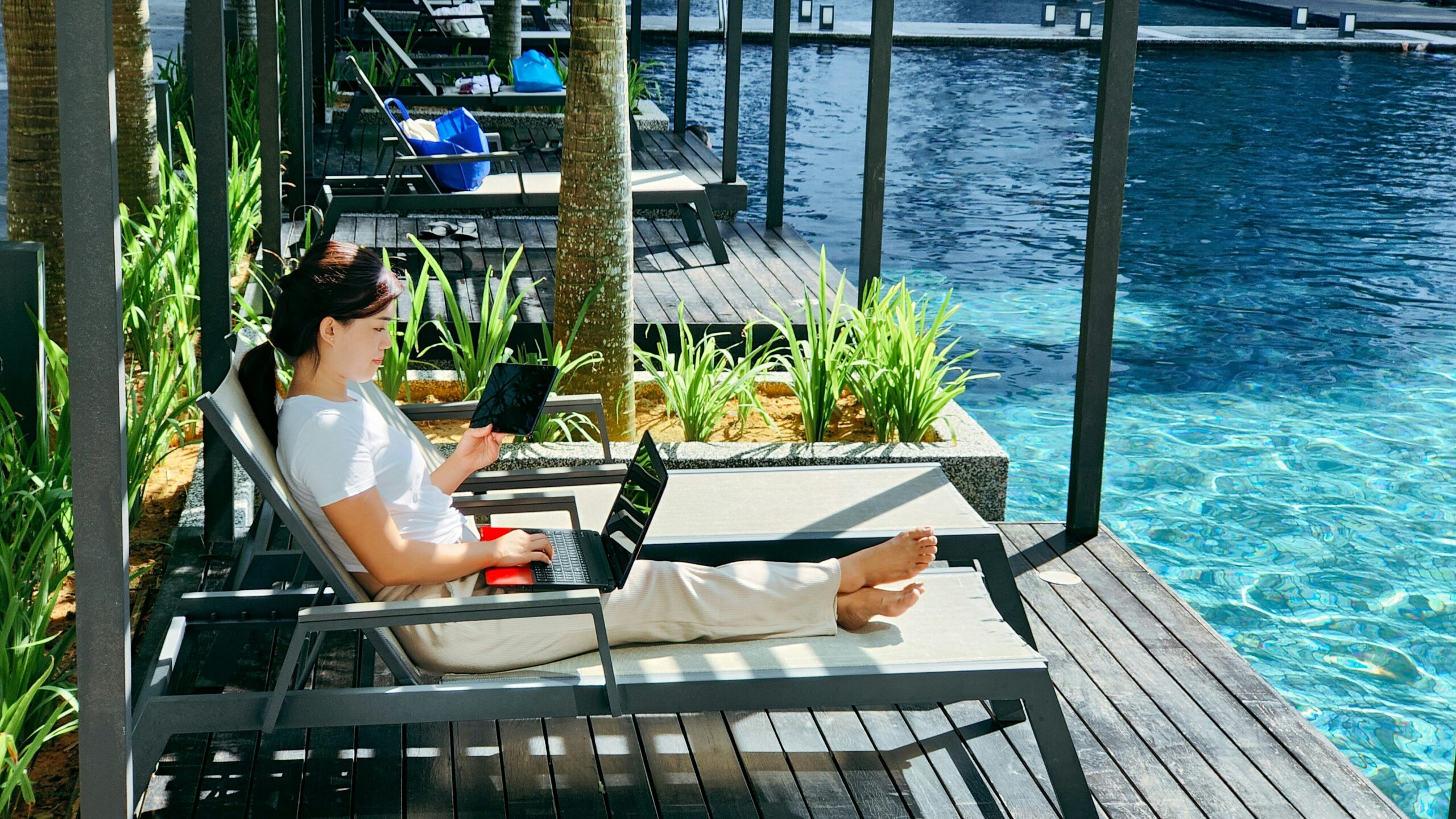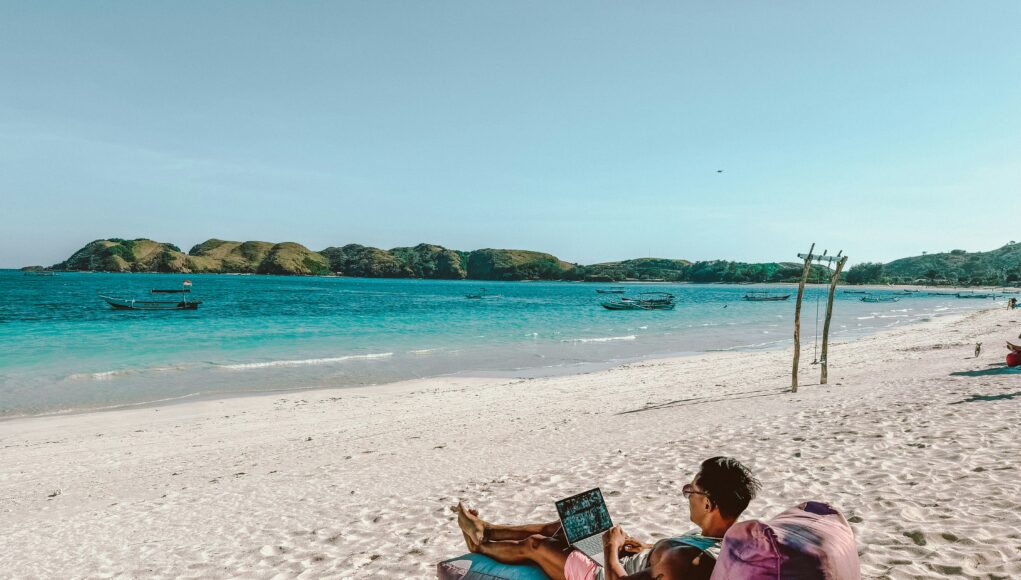In recent years, the concept of digital nomadism has gained significant traction, with more individuals seeking to blend work and travel. This trend has led to the emergence of digital nomad villages—secluded locations that offer not only a place to work but also a vibrant community and a chance to unwind in nature. These villages are designed to cater to the needs of remote workers, providing essential amenities like high-speed internet, co-working spaces, and social activities. As the world becomes increasingly interconnected, these havens for digital nomads are popping up in breathtaking locales, from tropical beaches to serene mountain retreats. This blog post explores the growing trend of digital nomad villages, highlighting some of the most popular locations, what to expect, and practical tips for making the most of your experience.

What is a Digital Nomad Village?
A digital nomad village is a community specifically designed for remote workers who wish to live and work in a picturesque setting. These villages typically offer a range of facilities, including co-working spaces, high-speed internet, and communal areas for socializing. The idea is to create an environment that fosters productivity while also allowing for relaxation and connection with like-minded individuals. Many of these villages are located in remote areas, providing a peaceful escape from the hustle and bustle of urban life. For instance, in Bali, the village of Ubud has become a hub for digital nomads, offering yoga classes, healthy cafes, and stunning rice terrace views.
Top Digital Nomad Villages Around the World
Several locations have emerged as hotspots for digital nomads, each offering unique experiences and environments. Here are a few notable examples:
- Canggu, Bali, Indonesia: This village is famous for its vibrant community and stunning natural beauty. With co-working spaces like Dojo Bali, nomads can work while enjoying the lush surroundings. Monthly costs for accommodation range from $300 to $800, depending on the type of lodging.
- Selina, Costa Rica: Located in the picturesque town of Santa Teresa, Selina offers a mix of co-working spaces, surf lessons, and wellness activities. Prices for a bed in a shared dorm start at around $20 per night, making it an affordable option for budget travelers.

Benefits of Staying in a Digital Nomad Village
Choosing to stay in a digital nomad village comes with numerous benefits that enhance both work and leisure experiences. Here are some of the key advantages:
- Networking Opportunities: Digital nomad villages attract individuals from diverse backgrounds, providing ample opportunities for networking and collaboration. Engaging with fellow nomads can lead to new partnerships and friendships.
- Work-Life Balance: These villages are designed to promote a healthy work-life balance. With access to recreational activities, wellness programs, and natural beauty, nomads can recharge and stay productive.
- Community Support: Living among like-minded individuals creates a sense of belonging. Many villages host events, workshops, and social gatherings that foster community spirit and support.
Practical Tips for Digital Nomads
For those considering a stay in a digital nomad village, here are some practical tips to ensure a smooth experience:
- Research Your Destination: Before committing to a village, research the location thoroughly. Consider factors such as internet reliability, accommodation options, and local amenities.
- Budget Wisely: While many villages offer affordable options, costs can vary significantly. Create a budget that includes accommodation, food, transportation, and leisure activities.
- Pack Smart: Depending on the location, packing essentials may differ. Bring necessary tech gear, comfortable clothing, and any personal items that will make your stay enjoyable.
Safety and Health Considerations
Safety is a crucial aspect of traveling, especially in remote areas. Here are some considerations to keep in mind:
- Health Insurance: Ensure you have comprehensive health insurance that covers international travel. This is vital in case of emergencies.
- Local Customs: Familiarize yourself with local customs and laws to avoid any misunderstandings. Respecting cultural norms is essential for a positive experience.
- Emergency Contacts: Keep a list of emergency contacts, including local authorities and your country’s embassy, in case of unforeseen circumstances.
How to Choose the Right Digital Nomad Village
With so many options available, selecting the right digital nomad village can be challenging. Consider the following factors:
- Community Vibe: Each village has its unique atmosphere. Some may be more focused on wellness, while others emphasize adventure or entrepreneurship. Choose one that aligns with your interests.
- Facilities and Amenities: Look for villages that offer the amenities you need, such as reliable internet, co-working spaces, and recreational activities.
- Cost of Living: Evaluate the cost of living in each village. Some may offer lower accommodation rates but higher food costs, while others may be the opposite.
As the trend of digital nomadism continues to rise, these villages provide an ideal blend of work, relaxation, and community. By choosing the right location and preparing adequately, remote workers can enjoy a fulfilling lifestyle that balances productivity with adventure.
Frequently Asked Questions
What’s the best time of year to visit digital nomad villages?
The best time to visit varies by location. For example, Bali is most pleasant from April to October, while Costa Rica’s dry season runs from December to April. Research the climate and peak tourist seasons to find the ideal time for your trip.
How much should I budget for a stay in a digital nomad village?
Budgeting depends on the location and your lifestyle. On average, expect to spend between $800 to $2,500 per month, covering accommodation, food, transportation, and activities. For instance, in Bali, a shared room may cost around $300, while meals can range from $2 to $10.
What should I pack for a digital nomad village?
Pack essentials like a reliable laptop, chargers, and headphones. Depending on the location, include clothing suitable for the climate, a reusable water bottle, and any personal items that will make your stay comfortable. Don’t forget travel insurance documents and any necessary medications.
Are digital nomad villages safe?
Safety varies by location, but many digital nomad villages are in tourist-friendly areas. Always research local safety conditions, stay aware of your surroundings, and follow common travel safety tips. Having health insurance is also recommended for emergencies.
How do I get to a digital nomad village?
Transportation options vary by location. Many villages are accessible via public transport, while others may require a rental car or shuttle service. Research the best routes and transportation methods before your trip to ensure a smooth arrival.
What local customs should I be aware of?
Understanding local customs is crucial for a positive experience. Research cultural norms, greetings, and dining etiquette. For example, in some cultures, it’s customary to remove shoes before entering homes or certain establishments.
Are there any insider tips for living in a digital nomad village?
Engage with the community by attending events and workshops. Networking can lead to collaborations and friendships. Also, explore the local area during your downtime to fully experience the culture and environment. Lastly, be open-minded and adaptable to make the most of your stay.
Can I work remotely from anywhere in a digital nomad village?
While many digital nomad villages offer co-working spaces with reliable internet, it’s essential to check the connectivity before committing. Some areas may have limited access, so ensure your work can be done effectively from your chosen location.



















